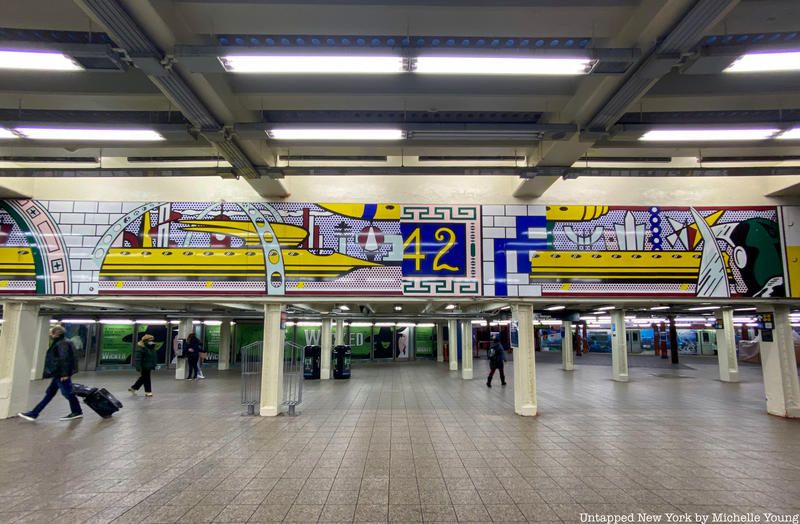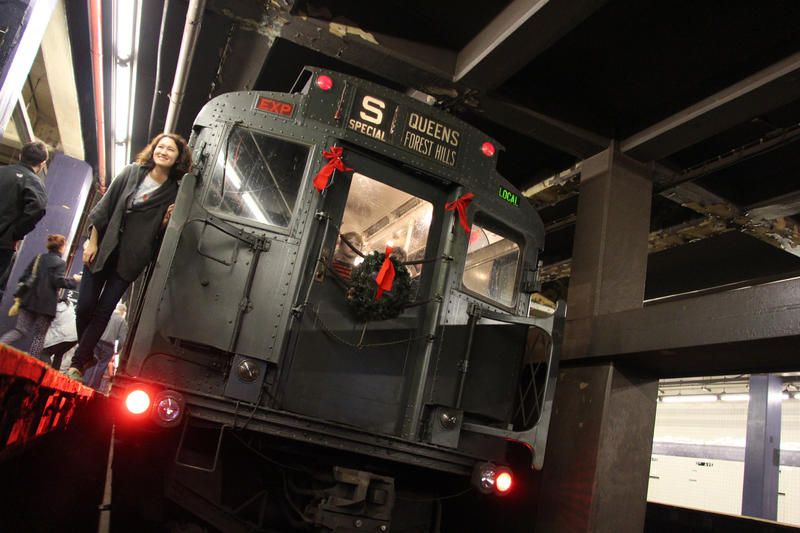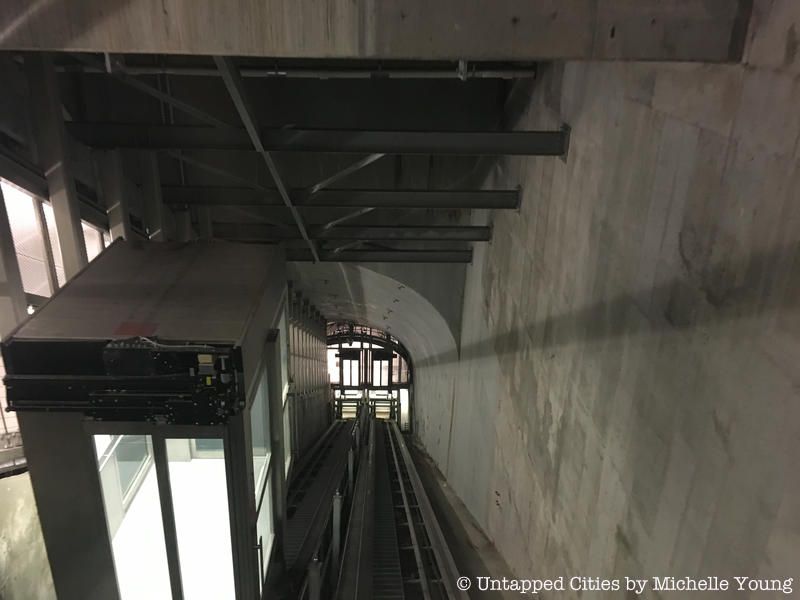Last-Minute NYC Holiday Gift Guide 🎁
We’ve created a holiday gift guide with presents for the intrepid New Yorker that should arrive just in time—



There is a rich and hidden history in the vast subterranean system of tunnels that make up much of the New York City subway system. The millions of riders are often oblivious to the secrets that are all around them, but if you know where to look, you can discover what makes the New York subway so unique. The Midtown and Queens subway lines pass through some of the busiest and oldest stations in the whole system and are where you can find everything from art, abandoned history, and the relics of different generations in the city.

It may be strange to think that one of the busiest subway stations in New York City could have an entire section that most of the public is completely unaware of, but hidden beneath Times Square–42nd Street/Port Authority Bus Terminal station, there is an entire unused platform. The out-of-service lower level was constructed in the 1950s and supported a special express line to the Aqueduct Racetrack. The platform had limited use even when it was operational, and part of it has been demolished since its service was halted.

The Times Square station is full of hidden gems and details that commuters pass by every day and the former entrance to the Knickerbocker Hotel is one of its most interesting. A doorway with “Knickerbocker” cast in metal sits inconspicuously on the platform, the bold lettering the only indication of anything exceptional.
The Knickerbocker Hotel was one of New York City’s most glamorous spots. Built in 1906 by fur trade magnate John Jacob Astor, the hotel was at the center of the elegance and opulence of the Gilded Age. Commuters could go through the door in the station and find themselves in the hotel’s bar (rumored to be where the Martini was invented). The hotel was renovated and is now a member of Leading Hotels of the World, but the doorway that used to be an entrance to a different world has been sealed shut.

If you are looking at a band of mosaic decorations running just below the ceiling in the Times Square–42nd Street/Port Authority Bus Terminal station, you may notice something off about them. In certain spots around the station, the MTA has covered sections of the mosaics with specially designed vinyl stickers that almost seamlessly blend into the wall. They are covering up a design that multiple historians have concluded is purposely supposed to resemble the Confederate battle flag. The mosaics were designed in the early 20th century by Squire Vickers and were supposedly an homage to New York Times owner Adolph S. Ochs. Ochs was a known supporter of organizations like the Daughters of the Confederacy and was open about his admiration for the Confederacy and the Lost Cause.
After the white supremacist rally in Charlottesville, Virginia, calls for the designs to be taken down prompted the MTA to cover the mosaics even though they disputed the mosaics’ link to the Confederacy. Kevin Ortiz, an MTA spokesperson, said, “These are not Confederate flags, it is a design based on geometric forms that represent the ‘Crossroads of the World’ and to avoid absolutely any confusion we will modify them to make that absolutely crystal clear,” back in 2017.

The double-height ceilings of the Second Avenue subway station platforms go unnoticed by most commuters, but like many small details of the architecture of the stations, there is a history around this quirk. The extra space was created in anticipation of a subway line that never got built. The Second Avenue Subway line was originally proposed in 1919. It was planned to connect 125th Street down the East Side, ending at Second Avenue Station. But the start of the project was abruptly halted when the market collapsed in 1929, and the soaring costs of the expansion became unmanageable.
The Second Avenue Subway project has been restarted, but is slowly being completed in stages, and a train line running all the way down the East Side is still a long way away. The terminus for that line will be a completely new station, and the Second Avenue Station will remain as just a reminder of the plan that never was, the double-height ceiling a vestige of a different generation.

Gimbels passageway or the Hilton passageway is a now-closed connection between the Herald Square and Penn Station subway stops. Commuters coming in by train from Penn Station used the passageway to connect to the Broadway N, R, Q, W and 6th Avenue B, D, F & M subway lines along with the PATH Train. The tunnel was named after the Gimbels department store, which sat right above the tunnel. In its heyday, Gimbels rivaled Macy’s, and shoppers could access the store directly from the tunnel. But as the city fell into financial troubles and crime rose, the passageway was not maintained and became a hotbed for illicit activity. The tunnel was closed in 1986 and has been closed up since, despite a push to reopen it in 2010.

If sudden hunger pains hit you mid-commute, you can actually get a full meal without having to ever resurface. The Turnstyle Underground Market offers an incredible selection of foods, including dumplings, paella, and bubble tea. The full underground food court attached to 59 St – Columbus Circle station is a big step up from the offerings of newsstands and shopping cart churros that most commuters are familiar with. Located beneath 8th Avenue, between 57th and 58th Street, Turnstyle Market boasts 39 unique eateries, shops, pop-ups, 19 food vendors, and ten retail stores. There’s even a Ukrainian spot called Blintz Box that serves sweet and savory blintzes as well as borscht, corndogs, and fries.

IRT train service connecting Grand Central directly to Astoria existed in the early 20th century. The IRT and BRT/BMT shared service along the Astoria Line from Queensboro Plaza (as well as along the Corona Line, now the Flushing Line). Queensboro Plaza was twice as large as the current station partly because the IRT also arrived into Queens from the IRT 2nd Avenue elevated line over the Queensboro Bridge.
The BMT 8 train (not the IRT 8 train, which was a completely different later service) was a BMT service from Queensboro Plaza to Astoria, and later once the BMT 60th Street Tunnel was built, it was also a service from the Broadway Line to Queensboro Plaza, where BMT subway customers could transfer to a BMT shuttle elevated train to Astoria. Because both the Astoria and Corona lines were built to IRT specifications, and IRT trains are narrower than BMT subway trains, BMT trains from the Broadway Line could not continue to Astoria until those platforms were physically shaved back and the Astoria Line became a BMT-only operation.

Some stops in New York’s subways are pretty short (Beverley station and Cortelyou station, on the Q line in Brooklyn, are only about 500 feet apart), but the longest uninterrupted run between stations is in Queens on the A train‘s run between the Howard Beach/JFK Airport and Broad Channel stations in Queens. The distance between the stops is 3.5 miles long, almost 37 times as long as Beverly and Cortelyou.

In the run-up to the 1939 Worlds fair, the city constructed a subway line to connect the World’s Fair site in Flushing Meadows-Corona Park to Lower Manhattan. Essentially, it was a two-mile extension that started near the Forest Hills-71st Street stop, allowing riders to go from Hudson Terminal (the World Trade Center stop today) to the fairgrounds by paying an extra 5 cents on top of the normal 5-cent fare.
The line was operational into 1941, but after the World’s Fair ended, political powers within the city government could not decide what to do with it. In the end, plans to expand it were shot down, and the line was demolished. Its short life span and the little remaining evidence of the line have caused most to completely forget about its existence.

The depth and angle of one of New York’s newest stations created a daunting task for engineers to construct an elevator down to the platform level. The Hudson Yards Station is one of the deepest stations in the system, and a long escalator helps commuters descend the 125 feet in between levels. But it created a difficult problem: how do you build an elevator down a slope?
Engineers from the Italian company Maspero Elevatori designed the funicular-style elevators to run on a track next to the escalators, moving at 100 feet per minute on a 27-degree angle slope, and the ride takes two minutes from door to door. The elevator project actually held up the station’s opening after problems with the elevator were discovered before being shipped over to New York from the factory in Italy. The elevator is the only one of its kind in the entire system.
Next, read about the top 10 secrets of the Brooklyn subway!
Subscribe to our newsletter